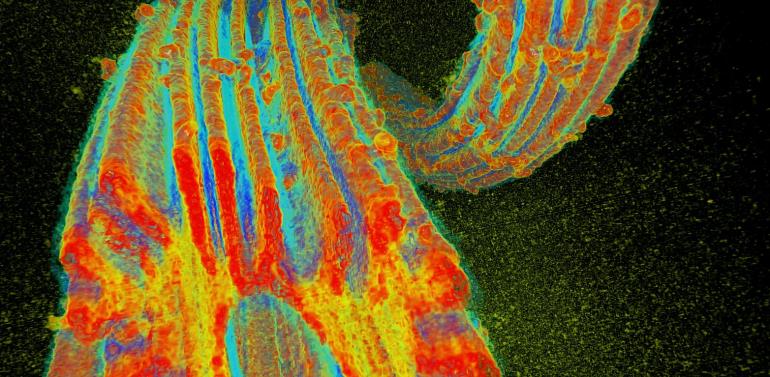International
Advances in extracting uranium from seawater announced

“Understanding how the adsorbents perform under natural seawater conditions is critical to reliably assessing how well the uranium adsorbent materials work,” Gill said. “In addition to marine testing, we assessed how well the adsorbent attracted uranium versus other elements, adsorbent durability, whether buildup of marine organisms might impact adsorbent capacity, and we demonstrated that most of the adsorbent materials are not toxic. PNNL also performed experiments to optimize release of uranium from the adsorbents and adsorbent re-use using acid and bicarbonate solutions.”
Marine testing at PNNL showed an ORNL adsorbent material had the capacity to hold 5.2 grams of uranium per kilogram of adsorbent in 49 days of natural seawater exposure — the crowning result presented in the special issue. The Uranium from Seawater program continues to make significant advancements, producing adsorbents with even higher capacities for grabbing uranium. Recent testing exceeded 6 grams of uranium per kilogram of adsorbent after 56 days in natural seawater — an adsorbent capacity that is 15 percent higher than the results highlighted in the special edition.
The special issue captures a wide range of enterprises, including:
Uranium coordination and computer-aided ligand design (ORNL)
Thermodynamic, kinetic and structural characterization of the adsorbent (Lawrence Berkeley National Laboratory, ORNL, PNNL)
Adsorbent synthesis using radiation to graft more polymer onto the polyethylene (ORNL, Brookhaven National Laboratory, University of Maryland)
Adsorbent synthesis using a chemical method (ORNL, University of Tennessee)
Adsorbent nanosynthesis (ORNL, PNNL, Hunter College, University of Chicago, University of South Florida, SLAC National Accelerator Laboratory, University of California-Berkeley)
Laboratory testing and modeling of adsorbent performance (ORNL, Georgia Tech)
Marine testing and performance assessment of the adsorbent (PNNL, Woods Hole Oceanographic Institution, University of Miami)
Adsorbent durability and reusability (PNNL, University of Idaho)
Adsorbent characterization, toxicity and biofouling studies (ORNL, PNNL, UI)
Technology cost analyses and modeling (University of Texas-Austin)
Green chemistry: Adsorbents prepared using marine shellfish waste (University of Alabama)
Adsorbent deployment (PNNL, ORNL, MIT)
Uranium from terrestrial sources can last for approximately 100 years, according to Erich Schneider of the University of Texas-Austin. As terrestrial uranium becomes depleted, prices are likely to rise. “If we have technology to capture uranium from seawater, we can ensure that an essentially unlimited supply of the element becomes available if uranium prices go up in the future,” Schneider said.
In July, experts in uranium extraction from seawater will convene at University of Maryland-College Park for the International Conference on Seawater Uranium Recovery. They will further explore the potential of uranium from seawater to keep the world’s lights on.
-

 Real Estate2 months ago
Real Estate2 months agoAl Mouj Muscat Unveils Azura Beach Residences Phase 2: A New Chapter in Waterfront Living
-

 Leaders Speak2 months ago
Leaders Speak2 months agoDhofar International Development and Investment Company: Driving Sustainable Growth and Strategic Synergies in Oman’s Investment Landscape
-

 Economy1 month ago
Economy1 month agoMaal Card: What Oman’s New National Payment Card Means for Everyday Users
-

 Events1 month ago
Events1 month agoOER Corporate Excellence Awards 2025 Honours Entities and Innovations in Oman
-

 OER Magazines2 months ago
OER Magazines2 months agoOER, October 25
-

 Arts and Culture2 months ago
Arts and Culture2 months agoOminvest and Bait Al Zubair Launch “Future Frames” to Empower Youth through Art and AI
-

 News1 month ago
News1 month agoSheikh Suhail Bahwan, Chairman of Suhail Bahwan Group, Passes Away
-

 News2 months ago
News2 months agoMs. Noor Saldin, Founder of Modern Generation International School, Wins Woman of the Year 2025; School Honored for Empowering Future Female Leaders































You must be logged in to post a comment Login